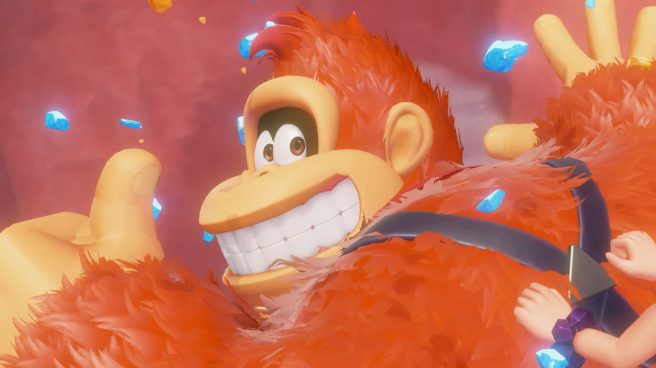Nintendo talks about why Donkey Kong Bananza wouldn’t have been possible on Switch 1
In a previous interview, Nintendo confirmed that Donkey Kong Bananza was initially in development for Switch 1 before it was moved to Switch 2. In fact, we even got a screenshot showing how things looked on the older hardware. But now in another interview, we get to hear more about why Donkey Kong Bananza really wouldn’t have been possible on Nintendo Switch 1 at the end of the day – especially in its final state.
Donkey Kong Bananza generally runs at 60 frames per second on Nintendo Switch 2. On Switch 1, 30 FPS would have been the target – but it sounds like the team was having a tough time even reaching stable performance at that level. Even more interesting though, back when development was happening on Switch 1, Nintendo hadn’t made the lower layers yet and according to co-director Wataru Tanaka, “if we continued making the game like this all the way down it may not be possible.”
Below is our full translation of the Nintendo Dream interview excerpt with Tanaka, artist Daisuke Watanabe, and producer Kenta Motokura:
This time the game was for Nintendo Switch 2, and I really felt the increase in the specs from Nintendo Switch in terms of things such as how lots of fragments of the terrain were scattered around, but did this make development harder?
Tanaka: Rather than saying it was harder, I would think about whether we would be able to make it on the original Switch. From a programmer’s perspective, the memory capacity would be very tight, and I think it would be difficult to bring the expansive stages that we have made to the Nintendo Switch.
As for the differences with the Nintendo Switch 2, staff would say things such as ‘We can have a 60 FPS frame rate’, ‘We can increase the amount of destructible objects placed that the player can interact with’, ‘It will be easier to design and create levels with destruction chain reactions’. So overall the reaction was very positive as there was an increase in what we were able to do.
In an ‘Ask the Developer’ interview, you showed pictures of the game developed on the Nintendo Switch and it seemed to look like it was mostly done. Did the game at that time and the game now run mostly the same?
Tanaka: The basic structure of the game was the same but it was still being developed and the lower floors hadn’t been made yet. It was a time when we said if we continued making the game like this all the way down it may not be possible.Watanabe: At that time the game was in a state when the frame rate didn’t maintain a stable 30 FPS, and so the feel and response was very different. I think it didn’t really feel like the same game that we have now.
Motokura: Even the expression of shadow was at a stage where we were unsure if we could add it. There were already times such as when lots of gold came out, where the processing could not keep up, so I was surprised thinking the machine was being pushed to the limit of its capability.
Tanaka: It wasn’t so much the amount of gold, but rather the intensity of the changes in the image (voxels), we were just beginning to tackle the technical side of that, and we thought there would still be many changes as development continued.
Is it a case that more than the look of the terrain itself, it’s the terrain material that changes the processing of the voxels?
Tanaka: Yes, that’s right. When you punch or dig into the ground you see fragments break off and roll around, in that moment behind the scenes a lot of intense processing is happening to ensure the fragments have good shapes and scatter in a satisfying way.
Donkey Kong Bananza is out now on Nintendo Switch 2. If you’re wondering what the game looked like on Nintendo Switch 1, check out this page.
Translation provided by Simon Griffin, SatsumaFS, and Philip Proctor on behalf of Nintendo Everything.
